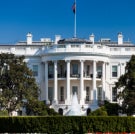When a Chilean woman posted a video on Instagram of herself doing chin-ups on a sacred torii gate at a Japanese shrine, the backlash was almost immediate. For many in Japan this was just the latest example of tourism gone wrong – of foreign visitors with no interest in understanding the local culture using their country as a playground.
International tourism to Japan has exploded in recent years, and while the official figure for 2024 is yet to be released it is now certain to be a new record in excess of the 31.9 million who visited in 2019 before the start of the Covid-19 pandemic.
This boom has corresponded with a rise in clashes between locals and foreigners, from monuments and shrines being defaced with graffiti to the decision to cover up views of Mount Fuji after they went too viral online. Japan has not yet seen the same anti-tourism backlash as Tenerife last summer, where protesters confronted holidaymakers on their beach towels, but there are growing concerns the situation could head in that direction if such clashes of culture are not addressed.
With popular cities like Kyoto, Tokyo and Osaka inundated by crowds of holidaymakers, particularly during the spring sakura cherry blossom and golden autumn colour seasons, the Japanese government is now appealing to foreign visitors to travel during off-peak periods, get off the beaten track – and respect local customs.
Even the Japanese government has been taken by surprise by the surge in foreign visits; it has smashed its target of recovering pre-pandemic tourism levels by 2025. In interviews with The Independent in Tokyo, government officials and industry leaders admitted there are concerns that current trends are not sustainable.
The Japan Tourism Agency, the government body responsible for the country’s tourism strategy, has released a new seven-point guide on “travel etiquette”, asking foreign visitors to educate themselves about local customs before traveling, “mind your manners” while in Japan and “respect cultural assets” including temples and shines.
Japan prides itself on its hospitality, and nowhere is this more clear than in the cultural practice of tea ceremonies. Highly formal and imbued with meaning, the simple act of offering a guest green matcha tea has been honed into an art form over centuries, even splitting off into different styles and schools of thought.
Alpha Takahashi works as a translator at Tokyo’s Grand Tea Ceremony, explaining the significance of each stage of the process to English-speaking tourists. She is a professional voice actor based in Los Angeles, but returns to Japan twice a year to help her mother, a tea ceremony sensei.
Organisers tell The Independent the event has become more and more popular in the 15 years since it was first launched, expanding to a second venue and selling out tickets weeks in advance. Setsuko Yukawa, the curator of the event from Arts Council Tokyo, says it is an opportunity for foreign tourists to “experience the hospitality of Japanese people”.
Takahashi says that in the early years of the event, foreign visitors were mostly invitees from embassies. Now tourists can be seen in long queues inside Hama-rikyu Gardens, hoping for the release of ticket resales, and she says she meets guests from all over the world who have “planned their trip to Japan around it”.
Like many aspects of life in Japan, the tea ceremony events are well-organised, structured and orderly. But other popular tourist destinations have struggled to cope with the influx of visitors, and tourism has injected unwanted chaos into the lives of locals.
Commuters in Kyoto must fight for space with luggage-wielding tourists on the overworked bus network, and local authorities earlier this year put up hoardings to block the view of Mount Fuji after residents of Fujikawaguchiko lost patience with tourists littering and spilling over into the road next to an unassuming Lawson convenience store.
Many restaurants in Japan are small, family-run businesses catering to just a handful of tables at a time. Owners might not speak English, and can be wary of serving foreign customers who don’t understand what they are ordering. A search for one-star online reviews for many restaurants, even in Tokyo or Kyoto, shows up examples of disgruntled tourists who were simply denied service at the door.
The overcrowding at the most popular destinations is encouraging tourists themselves to seek out quieter and more culturally enriching alternatives, particularly on a second or third visit.
“We see in the news that grandmas and grandpas can’t get on the bus in Kyoto, and it’s heartbreaking,” says Takahashi. “But at the same time… I’m very grateful for people who have already come and experienced it, now taking a second trip saying, ‘Okay, let’s take a step back and experience Japan in a different way, go to places we haven’t been.”
At the Japan Tourism Agency, officials are aware that the rapid influx of visitors is proving problematic.
“Yes we have concerns about overtourism,” says Shota Adachi, deputy director of the agency’s strategy planning division. “If too many people are coming and then the locals are not feeling well, [feeling] uncomfortable, that’s also not sustainable.”
He says the government is formally still committed to a target of welcoming 60 million annual foreign tourists by 2030, but that this will only be viable if they can be spread out – both geographically across the country, and throughout the year including the off-peak season.
“What we want to do is not trying to restrict the numbers, [the message is not] ‘don’t come to Japan anymore’,” he says. “It’s about trying to spread the demand.
“The important thing for Japan is to try to spread tourists to local areas, other than places like Tokyo or Kyoto, [or] Osaka. There are also many other nice places… attracting more tourists to those areas is something that will benefit not just the cities, but also those rural places.”
Hidden Japan
Japanese destinations off the beaten track
Akan, Hokkaido ‘They are training more tour guides, a great place for adventure tourism’
Recommended by Kuniharu Ebina
Kusatsu and Ikaho are onsen towns reachable from Tokyo as alternatives to more famous Hakone. Those willing to go further should try Beppu Onsen and Dogo Onsen in Ōita and Ehime respectively.
Recommended by Shota Adachi
Isa, Kagoshima Tourists can experience farming and cooking local produce in Japan’s rice-bowl
Recommended by Kuniharu Ebina
Iya Valley, Tokushima Thatched farmhouses, hot springs and the historic vine bridge in one of Japan’s most remote mountainous regions
Recommended by Kuniharu Ebina
Shirakawa-gō is a small historic village one hour’s drive from Kanazawa
Recommended by Alpha Takahashi
An important part of the solution, he says, is to better educate foreign visitors on how they are expected to behave in Japan – hence the new etiquette guide. The guide could soon be displayed in some form on planes heading to Japan, perhaps alongside the more familiar safety videos at the start of flights. “It’s something we may well be working on,” Adachi says.
Another possibility under discussion is to charge foreigners more to visit the most popular shrines, resort towns and cities. Such taxes are decided by local authorities, and a number have decided to increase rates for accommodation tax or the use of onsen – hot springs bath-houses. Yet these are blanket rates, and do not apply at different levels for foreigners.
The mayor of Himeji, whose castle is one of the most iconic in the country, sparked a national debate by suggesting a higher entry fee for foreign visitors – arguing that the proceeds would help pay for local services and spread the financial benefits of tourism more equitably.
Ryo Nishikawa, associate professor at Rikkyo University’s college of tourism, is wary of initiatives to charge foreign tourists more, or to issue them with strict instructions upon arrival in the country. Both risk damaging Japan’s welcoming reputation, he suggests.
Instead, he believes Japan should tap into the concept of machizukuri – literally “neighbourhood making” – the concept of local people protecting their own heritage and way of life. If more tourists can be diverted away from the big cities to see more of Japan as a whole, he says, it provides a more authentic, less crowded experience while also helping sustain rural communities.
“In rural areas the population is declining,” he says. “We have to use tourism to revitalise these areas… to use the profits from tourism to preserve cultural heritage and [at the same time] open up some cultural properties for tourists.”
Getting off the beaten track is, by definition, a more challenging prospect for those considering booking their own trip to Japan – first-time visitors in particular are much more likely to follow the so-called “Golden Route” from Tokyo to Mount Fuji, Kyoto and ending in Osaka.
That’s where a professional can provide added value, says Kuniharu Ebina, president of the Japan Association of Travel Agents.
He points to figures that show just how tightly concentrated foreign tourists are in a very small number of places, and compare that to Japanese domestic tourists who, exploring their own country, are spread out through its different regions much more evenly.
“Japanese people know a lot of nice areas of Japan that foreigners don’t know,” he says. “There’s still more that we can do, as the tourism industry [to promote that information]. We are also working on providing new experiences for foreign tourists, such as incorporating activities and local food into tours.”
The reality is that the problems associated with overtourism are only likely to get worse before they get better; with the weak yen making visits more affordable, the expectation is that this year will set another record.
Professor Nishikawa notes that the dramatic increase in inbound tourism has pushed up the price of international flights – making holidays abroad even more expensive for Japanese people themselves. It’s only natural, he suggests, that such a dynamic could turn public opinion against tourists if not managed properly.
The onus is on the government to show the Japanese public why tourists provide a net benefit to the country, he says, and not just in terms of the money they spend.
“Japan just started globalisation in the tourism industry, while other countries started earlier and are therefore more experienced,” he says. “We should also learn from [what’s happening in] other countries.”
Source: independent.co.uk



